
- Bringing cutting-edge AI (Artificial Intelligence) to the maritime shipping industry

DEEPSEA: next-generation voyage optimisation powered by Artificial Intelligence (AI)
Use Artificial Intelligence (AI) Performance Routing to instantly accelerate your fleet’s decarbonisation trajectory, and decrease fuel costs. Performance Routing will make a major, quantifiable impact on your fleet’s fuel consumption and CII today, high–impact results from day one.
“ DeepSea Vessel Voyage Optimisation AI Solution reduces emissions, it reduces fuel consumption, and it increases safety during operation. It is a win-win in all aspects of sailing “
Geir Fagerheim (SVP Marine Operations) Wallenius Wilhelmsen
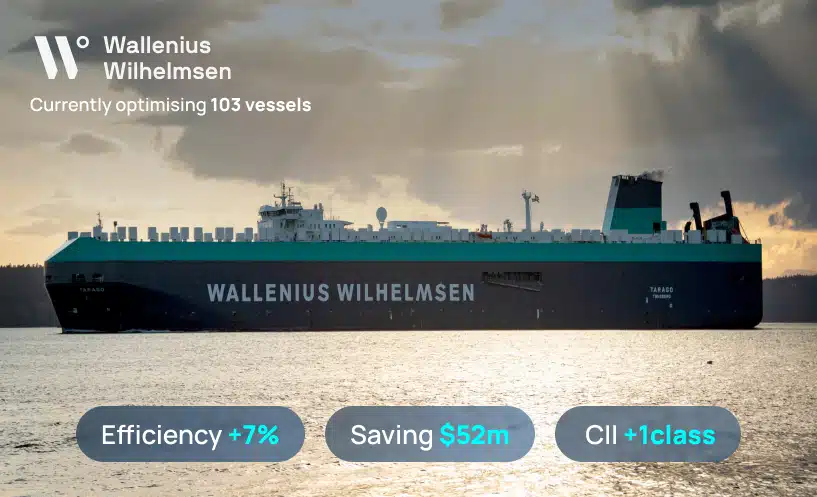
Vessel Voyage Optimisation for Decarbonisation – AI Solution :
DeepSea harnesses the latest in AI technology to make ships more efficient. Bringing together experts from technology and maritime, DeepSea focuses on increasing the efficiency and decreasing the fuel consumption of vessels through a combination of technical and operational insights powered by detailed AI-generated performance models. Performance vessel routing for the 21st-century.
We work with forward-thinking shipping companies to make the shipping industry leaner, greener and better connected.
Artificial Intelligence (AI) solutions for maritime shipping

DeepSea works with forward-thinking marine shipping companies to make the maritime shipping industry leaner, greener and better connected. Was founded in 2017 to bring the best of Artificial Intelligence (AI) to the shipping industry and its the shipping’s foremost AI team , powered by the most advanced AI team in the industry. With a culture of active research, contributes academic papers to conferences globally, run international initiatives in AI, and brings all these advancements to its efficiency-boosting products.
“AI is decarbonisation’s secret weapon – a ‘silver bullet’ which can make a dramatic improvement to every fleet. CII, profitability, asset value – it helps our customers improve their key metrics across the board.
Konstantinos kyriakopoulos, deepsea ceo.
DeepSea – AI for the shipping industry
In order to constantly provide an AI driven optimised vessel voyage DeepSea takes data from your vessel and (with AI) creates an accurate vessel model in the Cloud, which is updated, live, to exactly match your vessel’s state and help you run more efficient vessels and more efficient voyages, custom-planned voyages for each vessel.
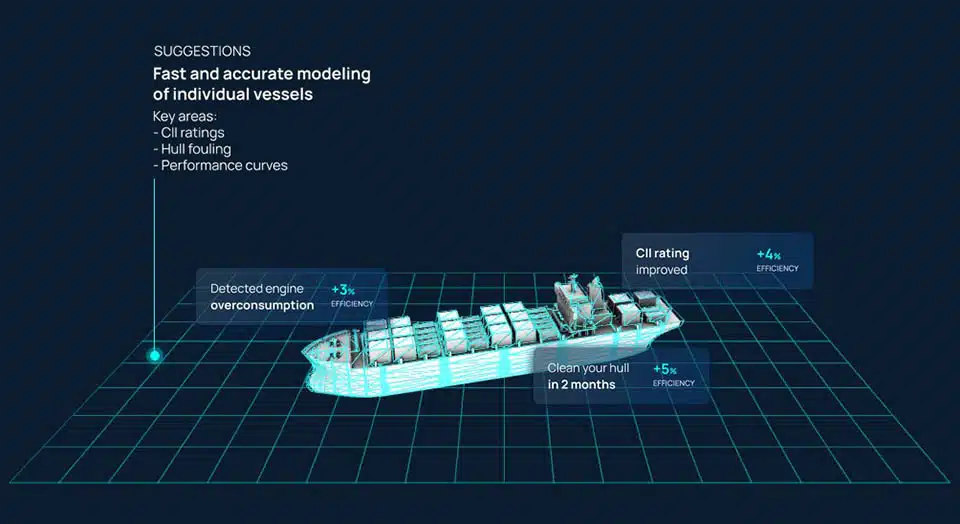
DEEPSEA Pythia – Performance vessel routing for the 21st-century The world’s first weather routing platform tailored to the exact performance of your vessel, under all weather conditions. Powerful AI models understand exactly how your vessel performs under any weather and fouling conditions.
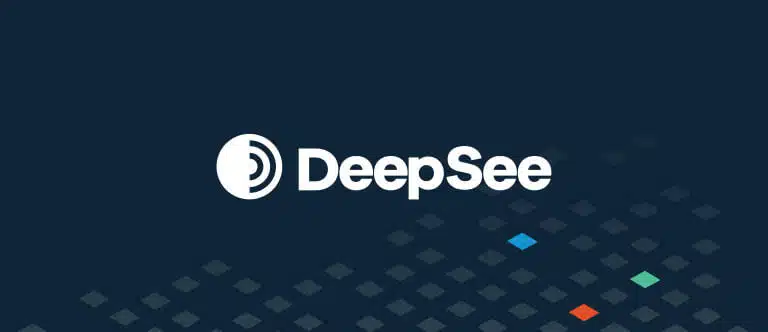
DeepSea’s platform, is now in place in more than 20 vessel fleets and accurately provides personalized speed and vessel route recommendations for each ship, based on deep learning models trained to predict each ship’s energy consumption in every possible condition. “No human, no matter how many years of experience they have, can compete with these automated instructions. They reduce emissions, reduce fuel consumption and increase operational safety.” “It’s a win-win in all aspects of shipping.”
Geir Fagerheim, SVP Marine Operations at Wallenius Wilhelmsen Shipping Company
Wallenius Wilhelmsen, known as a leader in the introduction of new technology and practices in the maritime industry, becomes the first global shipping company to adopt a fully AI-based approach to optimizing ship voyages across its entire fleet of more than 120 Ro-Ro ships.
Wallenius Wilhelmsen, the world’s largest car carrier, conducted a rigorous 18-month trial of DeepSea’s software to reach this deal. “This is a watershed moment for the meaningful and proven implementation of artificial intelligence (AI) in shipping,” said DeepSea President Roberto Cuestas (DeepSea), “There are now many solutions on the market that claim to save fuel, reduce emissions and meet environmental regulations – and most of them are just lip service. It is difficult for shipping companies to distinguish between what is real and what is just marketing. This partnership is another stamp of approval for our technology and approach, from one of the most advanced companies in the industry.” The 18-month trial yielded a fully validated performance improvement of 7% in a subset of Wallenius Wilhelmsen’s fleet, and when the project is completed across the entire fleet, this figure is expected to increase to 10%. This equates to more than 75.000 tonnes of fuel saved and 240.000 tonnes of carbon dioxide (C02) not emitted – and will dramatically help ships comply with new industry emissions regulations. Wallenius Wilhelmsen has set ambitious targets to reduce emissions by 27,5% by 2030. “Half of this reduction should come from existing ships. We are working diligently to find environmentally friendly solutions for our existing fleet. Our goal is to implement this innovative voyage optimization solution for increased vessel efficiency across our entire fleet,” said Geir Fagerheim, SVP Marine Operations at Wallenius Wilhelmsen.
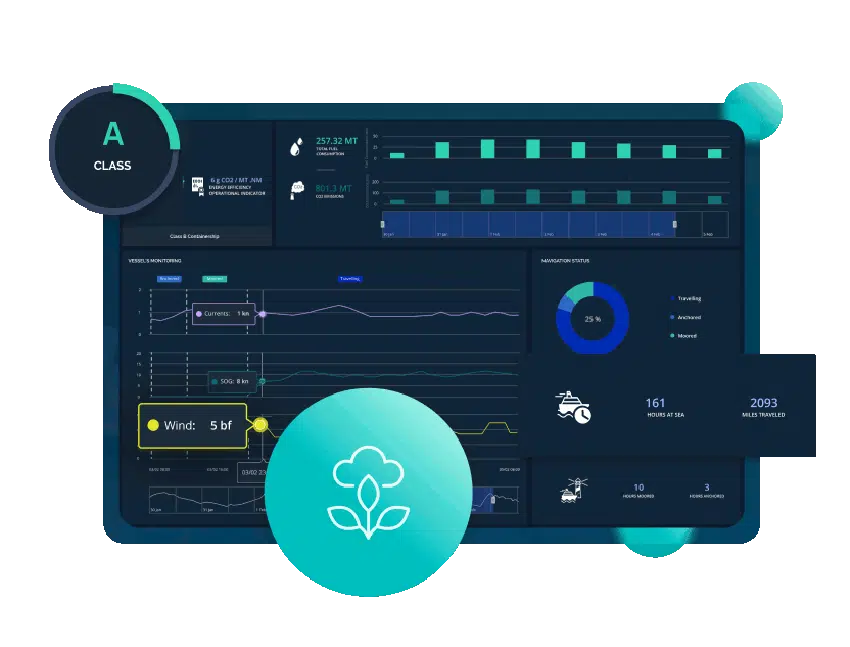
– – –
How the Shipping Industry Can Cut Carbon Emissions
The clients of the Greek company DeepSea AI, which include shipping companies from Singapore, Norway, Japan, etc., can save, through DeepSea’s technology, 8%-12% in fuel and reduce their environmental footprint. The way for the development of autonomous ships, where their route is “determined” not by the ship captain but by an algorithm, is opened by the acquisition of DeepSea Technologies founded by Konstantinos Kyriakopoulos and Roberto Kousta, by the Japanese multinational Nabtesco, listed on the stock exchange Tokyo.
“The technology we have been developing for so many years was heading in this direction. Now we have the right partner, which allows us to realize this goal, as we did not have a hardware system. With the combination of our technologies, we can also convert existing ships into autonomous ones, as well as install our systems on new ships,” says Mr. Kyriakopoulos, speaking about the goal of the acquisition of DeepSea by Nabtesco. DeepSea has developed an artificial intelligence platform which, through the collection – in real time – of data concerning the performance of commercial ships (tankers, containers) during navigation, creates models to optimize their performance (fuel saving, reduction carbon emissions) taking into account the weather conditions, the characteristics of the respective ship, etc.
Its technology is used on over 300 ships. “Essentially with this artificial intelligence model we help the captain reach his destination with the least possible environmental pollution and the best possible performance”, explains Mr. Koustas. This is where DeepSea and Nabtesco’s systems ‘merge’ together in which will be able to automate the ‘commands’ given to the ship by DeepSea (eg the optimal speed of the ship based on the weather conditions). “The ship’s autonomy will be based on the best possible control of its every movement to save even more fuel,” says Mr. Kyriakopoulos.
According to the company, its customers, which include shipping companies from Singapore, Norway, Japan, etc., can use DeepSea’s technology to save 8%-12% in fuel and reduce their environmental footprint . The latter is considered crucial, as the imposition of a carbon tax on shipping is being discussed, with European Union exerting pressure on the shipping sector.
DeepSea’s team, which consists of 90 people – 80% are located in Greece – is expected to increase to 110 in the next period, while Athens is being transformed into an artificial intelligence center for the Japanese company’s activities. These are not limited to the shipping industry, but extend to railway automation, aviation, wind turbines, etc. “With Nabtesco’s investment, technologies around what we call industrial artificial intelligence (industrial AI) will be developed in Greece,” says Mr. Kyriakopoulos. “We have a long-term action plan to implement what we want in autonomy and artificial intelligence”.
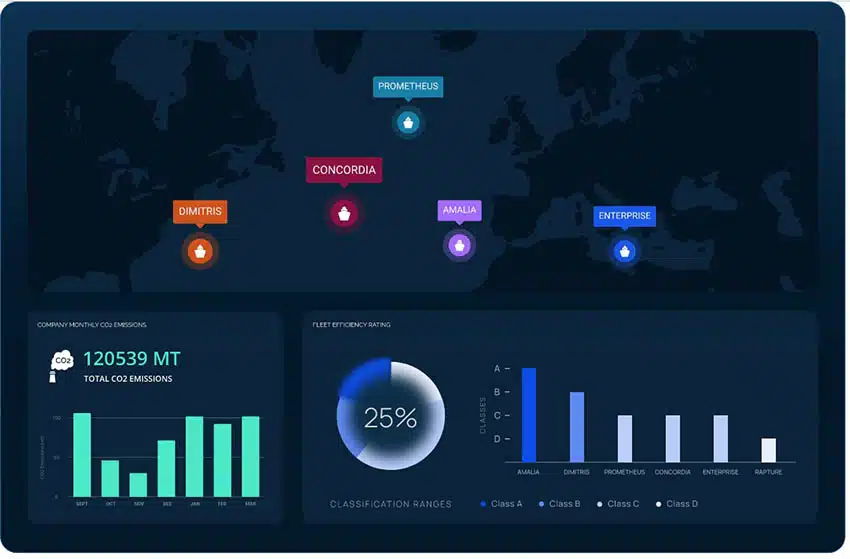
Wallenius Wilhelmsen moves to fully AI-based voyage planning with DeepSea
Making a real impact on emissions – artificial intelligence solutions for maritime shipping.
(September 7th, 2022) Wallenius Wilhelmsen became the first global shipping company to adopt a fully AI-based approach to voyage optimisation across its entire fleet of 120+ ships.
Wallenius Wilhelmsen shipping company rolled out DeepSea’s Performance Routing software , which provides vessel-specific route and speed plans, in the final quarter of 2022 and 2023. One of the most forward-thinking companies in the industry of maritime shipping, Wallenius Wilhelmsen has set ambitious targets to reduce emission by 27,5 per cent by 2030. This work with DeepSea is an important step towards meeting them.
Geir Fagerheim, SVP Marine Operations at Wallenius Wilhelmsen, says:
“No human being, no matter how many years of experience they have, can compete with these automated sailing instructions. It reduces emissions, it reduces fuel consumption, and it increases safety during operation. It is a win-win in all aspects of sailing.”
This landmark decision, the first of its kind globally, was not made quickly – but followed 18 months of rigorous step-by-step testing.
The numbers that ultimately came out of this comprehensive trial period are significant:
A 6,9% improvement in vessel efficiency and more than 170.000 tonne predicted reduction in emissions across the fleet.
However, equally important to focus on are the key learnings that emerged from the 18-month period of intense collaboration that led to this partnership.
On 13th October, Wallenius Wilhelmsen and DeepSea performed a virtual webinar discussing online this validation period and together discussed their key learnings for decarbonisation with vessel voyage optimisation ( Voyage Optimisation for Decarbonisation – online webinar ).
THE 10% INITIATIVE – Reducing CΟ2 emissions by 10%, with the shipping industry’s leading fleets
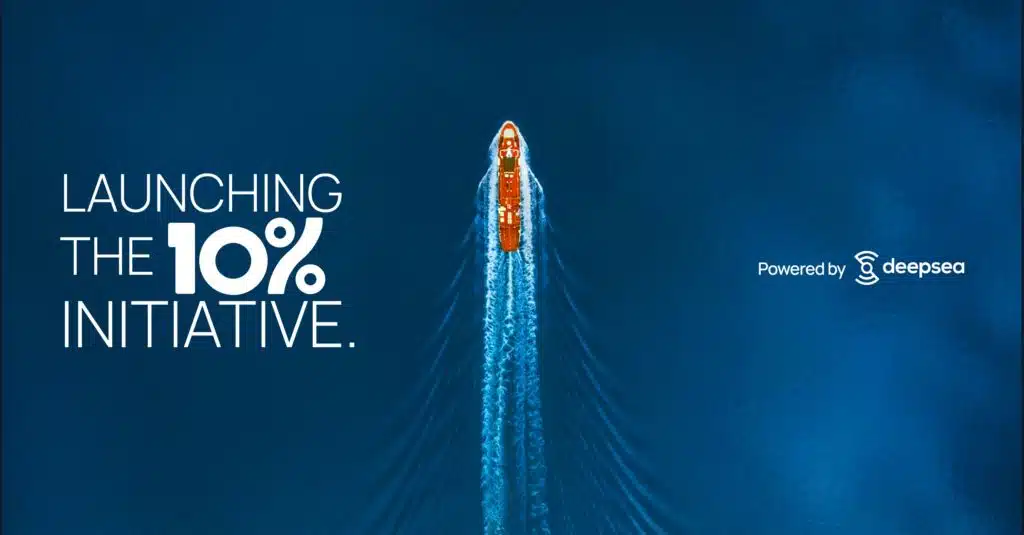
What is the 10% initiative? A movement to reduce maritime vessel energy costs by 10%, the approach is proven, cost-effective and can be achieved within 12 months. The 10% initiative is a commitment by DeepSea and the members (EUROSEAS Ltd, EuroDRY Ltd, ETF Partners, Nabtesco) of the initiative to work collaboratively to do something real, measurable, and impactful – with tangible benefits for everyone.

Articles related to the use of Artificial Intelligence in the maritime shipping industry
Wallenius Wilhelmsen Cargo Shipping giant is testing Artificial Intelligence AI voyage optimisation solutions: “Suddenly we had 10.000 data points in our database, and needed to make sense of that.” (September 16, 2022)
When it comes to voyage optimisation – picking the best course and speed for the journey – the ships’ captains don’t have the tools to make informed decisions, explains Mr Fagerheim of shipping company Wallenius Wilhelmsen (cargo ships). This is why they go hard and fast at the start of the journey, because they can’t predict later conditions. This is where AI-powered voyage optimisation platforms comes in.
The maritime industry is forecast to spend $931 million on artificial intelligence (AI) solutions in 2022, according to a recent report published by Lloyd’s Register in cooperation with Thetius
The adoption of AI solutions in the maritime industry is at a nascent stage, however, Artificial Intelligence has an immense potential to unlock value in optimizing fleet efficiency. AI technology for voyage optimisation is primarily focused on reducing vessel fuel consumption, resulting in the reduction of CO2 emissions and running costs. Lloyd’s Register’s Maritime Performance Services has developed vast experience is in the use of AI for vessel optimisation and helping to ultimately improve vessel performance. Traditional and legacy data analytics only look at 10% of vessel data, whereas AI models can now look at close to 100% of vessel data and process this data instantaneously to create extremely accurate vessel performance insights around fuel consumption, speed, trim, hull fouling and power consumption,” (Andy McKeran, Director of Maritime Performance Services, Lloyd’s Register). Spend on AI Artificial Intelligence solutions in the maritime shipping industry is expected to more than double in the next five years to $2,7 billion by 2027, a compound annual growth rate of 23%.
Machine learning: The next maritime frontier?
As the availability of data for high performance computing is increasing alongside the adoption of automation, Wärtsilä Voyage believes that artificial intelligence and machine learning are technologies to keep an eye on.
Four ways in which Maritime Industry is investing in AI for performance management
AI, IOT, Business Intelligence, Data Analytics are changing the way shipping operates, and also cutting costs and reducing risk to human lives. Leading shipping companies have deployed AI-assisted technologies to gain greater insight into their ships’ performance, while both established companies and start-ups are finding new ways to push the boundaries of AI.
Artificial Intelligence and the Era of Autonomous Shipping
The world is interconnected through global trade on the basis of a transportation industry. And, it will continue to grow, with a predicted rise of nearly a third in seaborne-trade towards 2030, and with increases in tonne-mileage up to 74,000 billion over the forecast period.
In other words, the ocean will experience substantial increases in traffic, pressure will get much higher and risk of marine accidents and incidents at sea will persist. It is estimated that roughly 90% of marine casualties and incidents caused by human mistakes, costing over EUR1.4 billion in marine liability insurance claims.
This in fact has urged businesses to invest in automation underpinned by transformational technologies of Artificial Intelligence (AI) and machine learning, as the ultimate solution to improve productivity, efficiency and safety by eliminating human errors.
Statistics have shown that AI has the capability to boost the transportation and logistics industry performance by almost 90%, potentially increase the industry’s annual revenue up to EUR0.45 trillion.
“Autonomous shipping is the future of the maritime industry. As disruptive as the smartphone, the smart ship will revolutionise the landscape of ship design and operations”
Mikael Mäkinen, President, Marine at Rolls-Royce Plc.
AI-driven Voyage Optimisation Artificial Intelligence Tools Offer Step Change for the maritime shipping navigation sector
The maritime shipping sector has been working hard to find ways to decrease carbon fuel emissions inline with the Initial IMO GHG Strategy and the Maritime 2050 agenda with a heavy focus on autonomy and future fuels. But as pressure continues to grow in the wake of COP26 solutions which unlock the potential for a reduction across existing vessel fleets are imperative.
A brief introduction to AI (Artificial Intelligence) and its applications in the maritime industry
During the 2023 SMART4SEA Athens Forum, Mr Themistoklis Sardis, (IT Manager at Costamare Shipping Company S.A.) explained that there are several AI applications in the shipping industry, including automation of cargo handling and management, optimization of routes and logistics, and predictive maintenance of ships and other equipment.
How AI is changing the Maritime Industry? How is Artificial Intelligence used and benefiting the Maritime Shipping Industry!
While many industries benefit from and use AI to streamline operations and receive valuable insights, each has unique applications. Understanding how the maritime industry is adapting AI and machine learning can better prepare you for working on the water alongside this equipment
Free Buyers Guide – Leading artificial intelligence (AI) companies for the shipping industry
A free document (buyers guide) that includes detailed information on the Shipping AI solutions manufacturers and suppliers and their vessel routing optimisation and planning products, along with contact details, to inform your purchasing decision (download a free copy).
Shipping 4.0 : The Future of the Maritime Industry
Steam. Electricity. Internet. These three industrial revolutions, changed everything about the way the world works. Today, we’re in the middle of the fourth industrial revolution: Artificial intelligence (AI). Contrary to the common belief that shipping operates in a traditional, “old-fashioned” model, new strides as part of this automation-driven industrial revolution have created new patterns of innovation and change. This is Shipping 4.0.
SOURCES ON the subject: Artificial Intelligence
What is Artificial Intelligence (AI)? Artificial intelligence leverages computers and machines to mimic the problem-solving and decision-making capabilities of the human mind . (IBM)
Artificial intelligence is the intelligence of machines or software, as opposed to the intelligence of human beings or animals. (Artificial Intelligence – Wikipedia)
Artificial intelligence, the ability of a computer or computer-controlled robot to perform tasks commonly associated with intelligent beings. ( Artificial intelligence (AI): Definition, Examples, Types – Britannica )
What is artificial intelligence (AI)?
Artificial intelligence is the simulation of human intelligence processes by machines, especially computer systems. Specific applications of AI include expert systems, natural language processing, speech recognition and machine vision.
How does AI work?
As the hype around AI has accelerated, vendors have been scrambling to promote how their products and services use it. Often, what they refer to as AI is simply a component of the technology, such as machine learning. AI requires a foundation of specialized hardware and software for writing and training machine learning algorithms. No single programming language is synonymous with AI, but Python, R, Java, C++ and Julia have features popular with AI developers. ( What is Artificial Intelligence and How Does AI Work – TechTarget )
Differences between AI, Machine Learning and Deep Learning
AI , machine learning and deep learning are common terms in enterprise IT and sometimes used interchangeably, especially by companies in their marketing materials. But there are distinctions (see more at: AI vs. machine learning vs. deep learning: Key differences (techtarget.com)

What are the 4 types of AI intelligence?
Some of these types of AI aren’t even scientifically possible right now. According to the current system of classification, there are four primary AI types: reactive, limited memory, theory of mind, and self-aware . (Source: Understanding the 4 Types of Artificial intelligence – bernardmarr.com )
What is AI? Everything to know about artificial intelligence, the fascinating and fast-developing technologies of AI – ZDnet.com
What Is AI? Learn About Artificial Intelligence – a very comprehensive article on AI, by Oracle.com
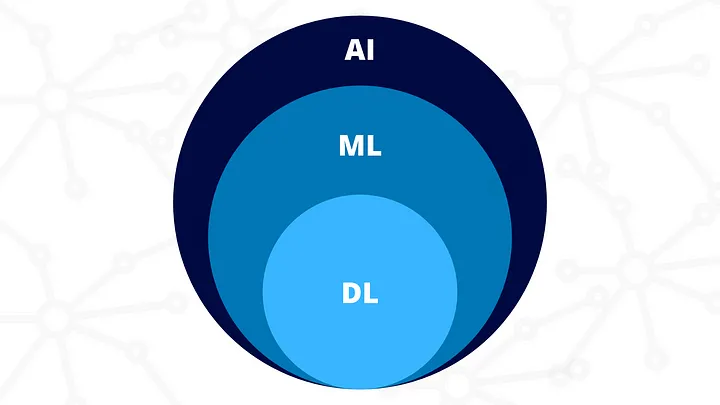
Advantages and Disadvantages on the use of Artificial Intelligence
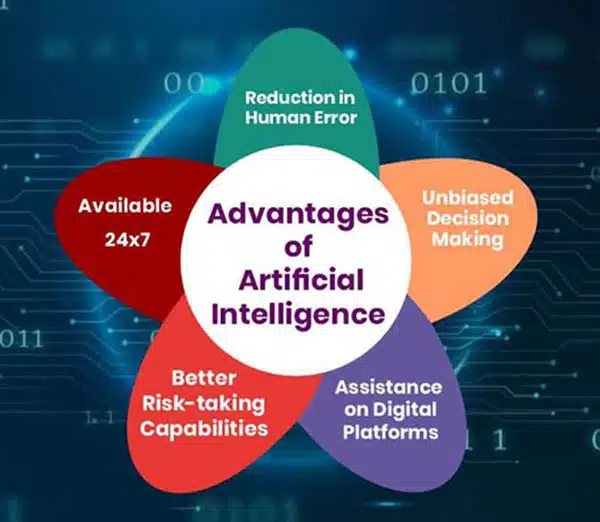
What is Artificial Intelligence (AI)? (according to an AI app itself 🙂 … ChatGPT )
Artificial Intelligence (AI) refers to the simulation of human intelligence in machines that are capable of performing tasks that typically require human intelligence. These tasks include things like learning, reasoning, problem-solving, perception, language understanding, and even decision-making.
AI systems are designed to analyze data, recognize patterns, and make informed decisions or predictions based on that data. They can be trained to improve their performance over time through iterative learning processes. AI technologies are broadly classified into two categories: Narrow or Weak AI and General or Strong AI.
Narrow or Weak AI: This type of AI is designed and trained for a specific task or a narrow range of tasks. It excels at performing those tasks, often surpassing human capabilities, but it lacks the ability to understand or perform tasks outside of its predefined scope. Examples of narrow AI include voice assistants like Siri or Alexa, image recognition systems, and recommendation algorithms used by streaming services.
General or Strong AI: General AI refers to a level of artificial intelligence that has the ability to understand, learn, and apply knowledge across a wide variety of tasks, much like a human being. It would possess human-like cognitive abilities and could potentially perform any intellectual task that a human can. General AI remains largely theoretical at this point and has not been achieved.
AI systems can be further categorized into machine learning and deep learning:
Machine Learning: It is a subset of AI that involves training algorithms to learn patterns from data and make predictions or decisions based on that data. Types of machine learning include supervised learning (training with labeled data), unsupervised learning (finding patterns in unlabeled data), and reinforcement learning (learning through trial and error).
Deep Learning: This is a subset of machine learning that utilizes artificial neural networks to model and process complex patterns and relationships in data. Deep learning has been particularly successful in tasks like image and speech recognition.
AI has a wide range of applications across various industries, including healthcare, finance, transportation, entertainment, and more. It continues to advance rapidly and has the potential to revolutionize how we live and work, although ethical considerations and potential challenges also need to be carefully addressed as AI technology progresses.
Recent Posts
- The invisible networks that drive the global economy – The 5 weak links
- Luxurious Marinas: the most luxurious marinas destinations worldwide
- European program promotes fishing nets made of biomaterials to preserve marine life
- DATA CENTERS: the investments of Google, Microsoft, Amazon Web Services, Cisco and Digital Realty Company in Greece
Maritime Navigation Services and Products DIRECTORY

DIGITAL Nautical Charts

PAPER Nautical Charts

Nautical Charts CORRECTIONS

Nautical PUBLICATIONS

Find all top providers of Marine Navigation products & services for safe Maritime Voyage Planning
Privacy Overview
- Hydrostatics and Stability
- Hull Form Design and Hydrodynamics
- Structural Design
- Information Sharing and Collaboration
- Support and Training
- Customers and Stories
- Software for Ship Design
- NAPA Stability
- NAPA loading computer
- NAPA Emergency Computer
- NAPA Logbook
- NAPA Fleet Intelligence
NAPA Voyage Optimization
- NAPA CII Simulator
- ClassNK-NAPA GREEN
- NAPA Studios
- Insights and Events
- Quality and Awards
- Newsletter Subscription
Weather routing for reducing ship emissions and enhancing safety
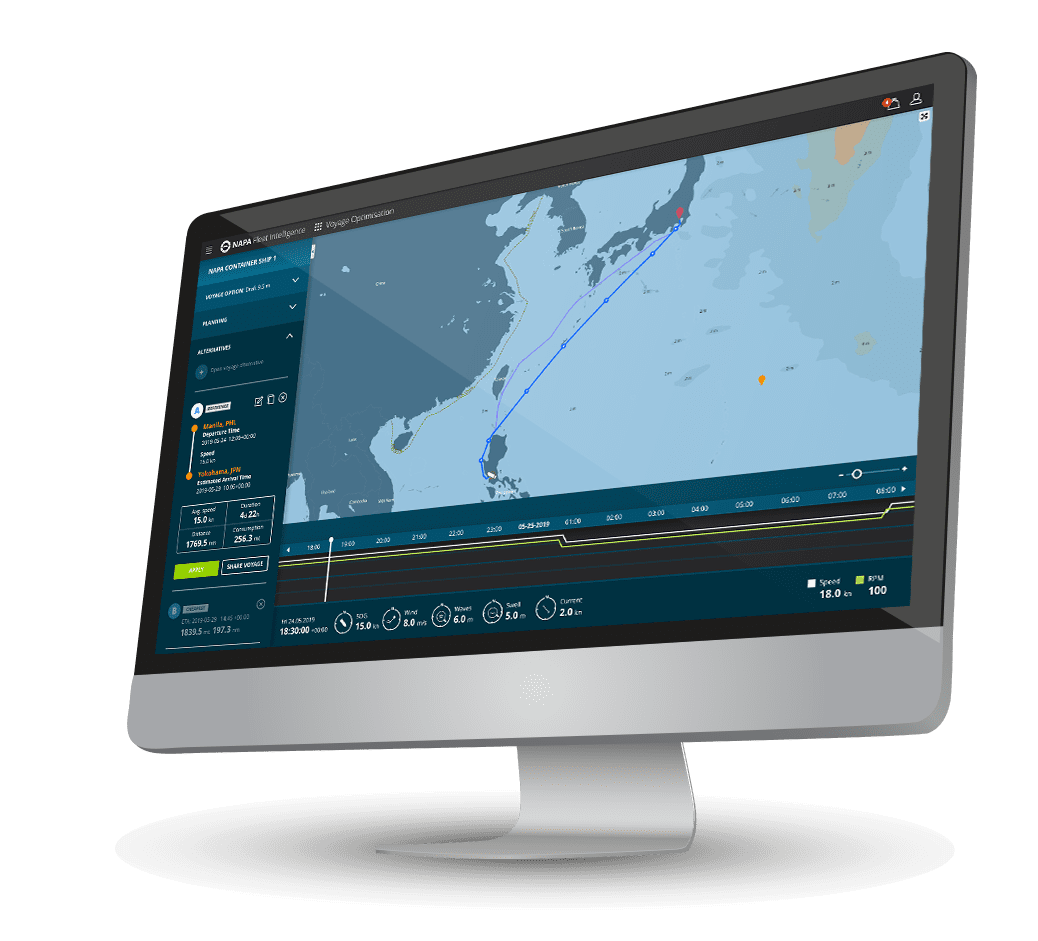
NAPA Voyage Optimization is an easy-to-use solution for improving operational efficiency by optimizing route and speed profiles for any sea passage.
Key features
Related insights, how it works.
- Feature overview

- Weather routing , considering wind, wind waves and swell, sea currents, water depth, tropical storms, and additional safety limits. Monthly climatology data is used when the voyage exceeds the weather forecast period.
- Optimization for a selected goal : Arrival time, constant speed, RPM, engine load, maximum daily profit, or overall cost reduction.
- Route and schedule alternatives are provided for comparison. You can also fetch an earlier voyage as a basis or define your own plan.
- The vessel’s performance is calculated using a proprietary NAPA performance model , which also supports vessels with wind-assisted propulsion.
- CII rating and CO 2 emissions , fuel consumption, schedule, and costs are estimated for the voyage alternatives.
- Different fuel types and their properties and costs are accounted for, also considering the Emission Control Areas (ECAs) .
- The proposed route is produced using safe navigable routes and is ECDIS compliant. Final verification for the safe passage will be done onboard with the latest ENC materials and Temporary and Preliminary Notices to Mariners.
- When en route, Voyage Monitoring automatically offers new route proposals as weather conditions change, and enables follow-up of execution of the voyage plan.
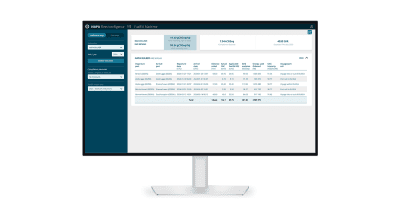
NAPA launches FuelEU compliance tool after successful 1500-vessel pilot with ClassNK
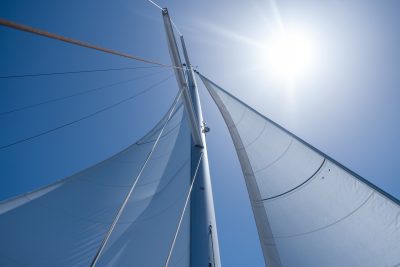
Turning the wind around – how to unleash your ship’s “speed reserve” with voyage optimization
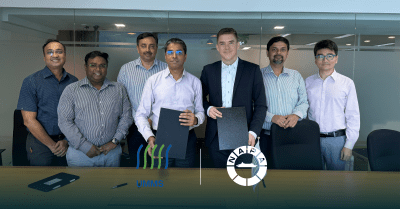
NAPA and Union Marine Management Services enter agreement on Voyage Optimization and CII simulator deployment
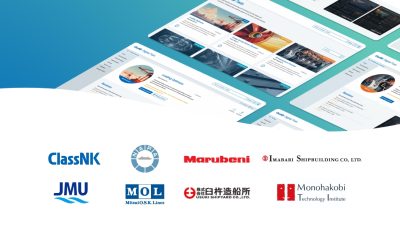
Cross-industry collaboration launches to accelerate digital twins uptake in shipping
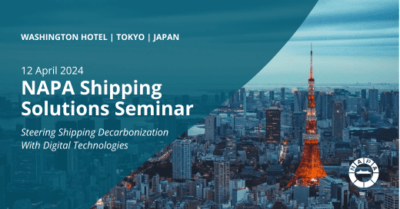
Sea Japan and NAPA Shipping Solutions Seminar 2024, Tokyo, Japan
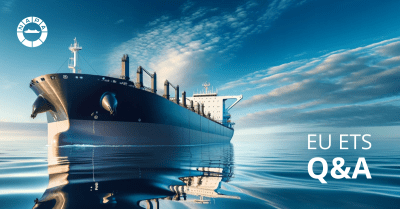
A practical guide to EU ETS
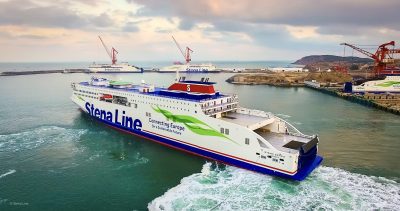
NAPA & Stena Line: Two Decades of Collaborative Maritime Innovation for Enhanced Efficiency and Safety
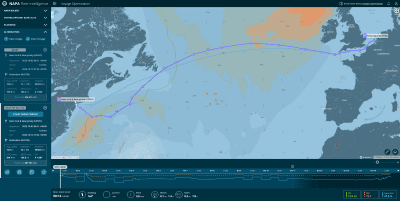
Ta-Ho invests in digitalization to reduce emissions and improve fleet management
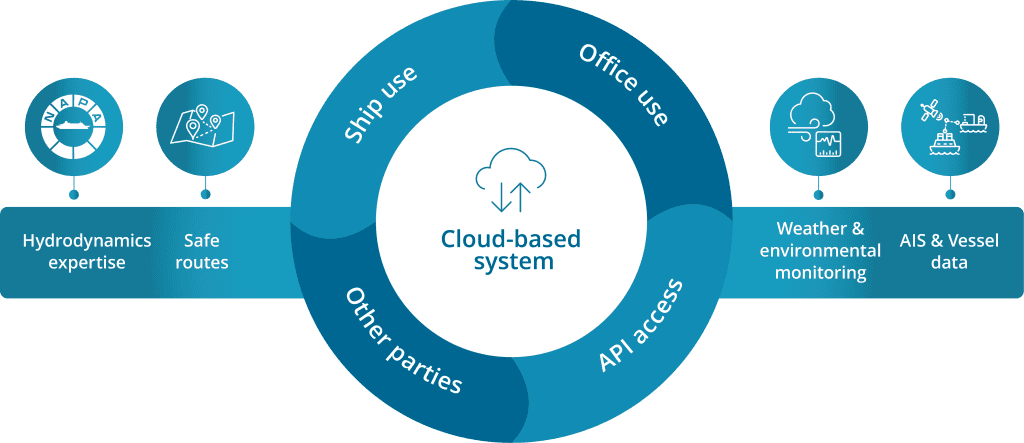
- A module on the NAPA Fleet Intelligence platform , available both on a web browser and desktop application
- Onboard and on-shore tools for increased communication and awareness, boosting collaboration across voyage stakeholders
- User-friendly and proven features for daily voyage planning
- Weather routing for multiple voyage scenario simulations and comparisons on ETA, fuel cost, environmental performance, and safety
- High-accuracy performance model for all commercial ships, dynamically updated with data collected from vessels to reflect the current performance
- Available also as an API for 3rd party integration
ETA Control
- Operate fuel-efficiently without compromising safety
- Improve CII rating (Carbon Intensity Indicator)
- Decrease crew workload
- Improve voyage estimates by estimating fuel consumption with vessel-specific performance models and weather forecast
- Operate the whole voyage with optimum RPM profile while ensuring reaching the port by Laycan
- Arrive on the agreed ETA, and calculate the effect of ETA changes during the voyage for negotiating the demurrage rate of the delayed days and sharing of fuel reduction benefit between operator and charterer
- Increase Time Charter Equivalent earnings by making better deals, optimizing speed profile and route, and taking advantage of Virtual Arrival or Sea Traffic Management BIMCO clauses
- Increase efficiency in making and altering the voyage plans by improving communication possibilities with operator and crew
- Lower Scope 3 emissions
- Use the same performance model, environmental forecasts, and optimization algorithms on your own simulations and comparisons as the operator and the crew are using
- Decrease costs through improved scheduling, schedule adjustment processes, and improved route and speed profile optimization
- Reduce the risk of cargo loss, delays, or unnecessary expenditure with enhanced visibility into vessel operations and being actively involved in the voyage planning and execution
Overview of NAPA Voyage Optimization
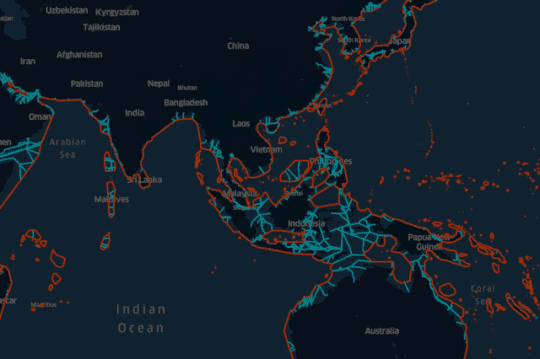
- Port to port connections
- Vessel draft and UKC requirements (Under Keel Clearance) considered in route finding
- Usage of channels automatically restricted by vessel size, or disabled manually by end-user
- Route optimized freely on open sea areas while respecting predefined fairways and traffic separation schemes
- The latest vessel position updates automatically
- Port search to quickly find destinations or user-specified coordinates
- Open / Save your own plans or import & export from/to other formats ( RTZ and proprietary ECDIS formats )
- Specify the primary speed control method for routing
- Route alternatives are found using selected target, such as daily profit maximization or overall cost reduction
- Channel restrictions are considered in the proposed routes (TSS, Suez Canal, Panama Canal, etc.)
- Expected delays from canal passing are automatically taken into account in ETA estimation
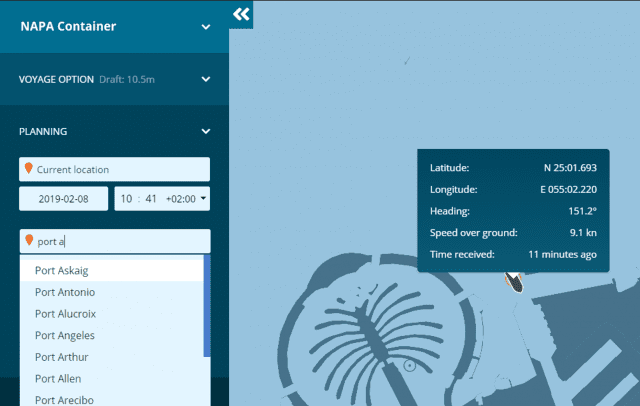
Alternatives
- Benchmark optimized option against the shortest, or a user-selected voyage
- Key performance indicators are shown in an easily comparable way
- Table view available for further details
- Compare different routes or the same route with different schedules
- Alternatives can be edited , while the effect on schedule and cost is immediately seen
- Save or share voyages for later use
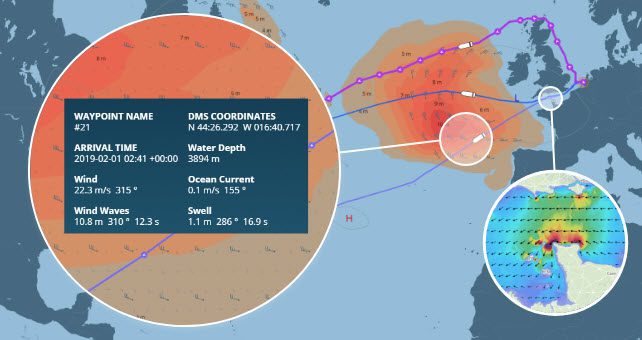
Map and weather information
- All relevant parameters covered and considered in the optimization
- Global environmental data forecasts supplemented with locally higher resolution forecasts
- Map layers for the relevant geographic areas, such as Emission Control Areas or Piracy Risk Areas
- Global distribution of weather and map data ensures a good user experience
- Most important weather information clearly shown on all zoom levels
- Weather information and the ship’s predicted position always in sync
- Weather forecast can be shown to any selected point on the voyage timeline
- More details on weather conditions available on closer zoom levels
- Climatology database will be used beyond reliable forecast span (seasonal, sea area-specific conditions)
- Tropical storm forecast with predicted track
- Weather forecasts validated by the weather service provider and in our own studies (Read: The role of accurate nowcast data in ship performance analysis )
API access is available for use cases such as:
- Onboard voyage planning application needing weather routing for the open sea passage of the voyage
- Voyage estimate calculations in a shipping ERP software needing accurate fuel consumption estimates, which consider the most probable weather conditions
- A shipping company’s internal KPIs needing calculations on what is the cost of anchorage time, how much could have been saved by from weather routing, or benchmarking the performance of different weather routing services
- A consultancy services for weather routing in need of more scalable IT tools for the fuel consumption estimates
- Free access is available for academic purposes; for example, evaluating emissions on different ship types and trading routes, evaluating the saving potential of different fuel-saving devices, or saving potential of improving the operational efficiency of ports by enhanced scheduling systems.
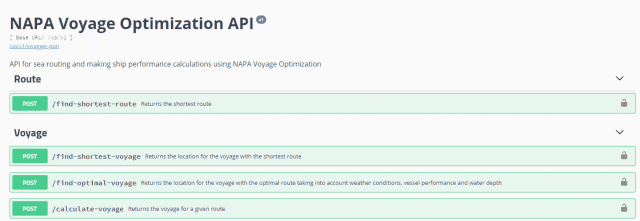
NAPA Fleet Intelligence Data Sources Monitoring and Analysis Modules
NAPA Voyage Optimization NAPA Performance Model Shipping Customer Stories
Get more information
Fill in the form and we will be happy to respond to your questions and introduce our offering in more detail.
You can also be in touch with your local office directly.
By submitting the form, I consent my information to be used according to NAPA’s privacy policy .
Always optimized for

Voyage Optimization: The Value of Dynamic Recalculations in Achieving Higher Vessel Yield
A white paper on automation, data fusion, and machine learning to support daily decision makers.
With ever-evolving market conditions, optimizing voyages to maximize vessel yield is imperative. Many companies are trying to improve their business by using conventional route optimization tools. However, those techniques are not sophisticated and unable to recalculate voyage outcomes in real-time, taking into account all available data.
At Nautilus, we’ve seen that focusing solely on environmental conditions and fuel prices doesn’t fully maximize voyage profit potential. Our Voyage Optimization tool is based on current and future market rates, environmental impacts, as well as machine learning-based performance models in order to output recommendations that enhance voyage outcomes.
Our White Paper surfaces how voyages are currently being optimized and how shipping companies are missing key profit opportunities. We will highlight all inputs that have to be part of a Voyage Optimization tool to gain a competitive advantage in the market.
Fill out the form below to learn more.
Don’t Miss Out
Get the latest insights in your inbox
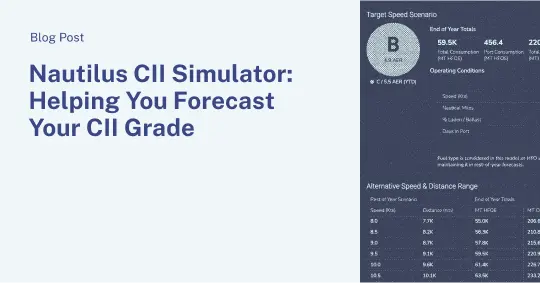
Nautilus CII Simulator: Helping You Improve Your CII Grades
We're very excited to announce the launch of our CII Simulator tool, helping owners, operators and charterers better understand the impact operating decisions are having on a vessel's future CII grade. Read on to learn more... For ship owners, operators, and...
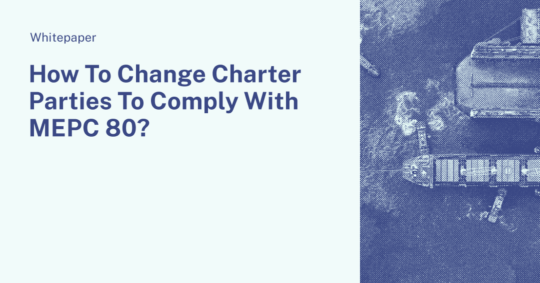
How To Change Charter Parties To Comply With MEPC 80?
Shipowners and charterers are faced with increasingly complex regulatory challenges. Many of the viable options will only deliver results in the long term, and right now, existing charter party agreements hinder efforts to operate more effectively. Transforming...
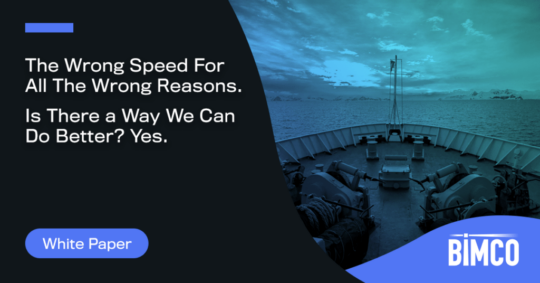
The Wrong Speed for All the Wrong Reasons
Co-written with BIMCO, this White Paper covers the shipping industry's inefficient operating patterns and how they contribute to unnecessary fuel burn and emissions. With emerging emissions regulations, it is crucial for our industry to find ways to reduce emissions...

- Data Portfolio
- Our Technologies
T-VOS: THEYR VOYAGE OPTIMISATION
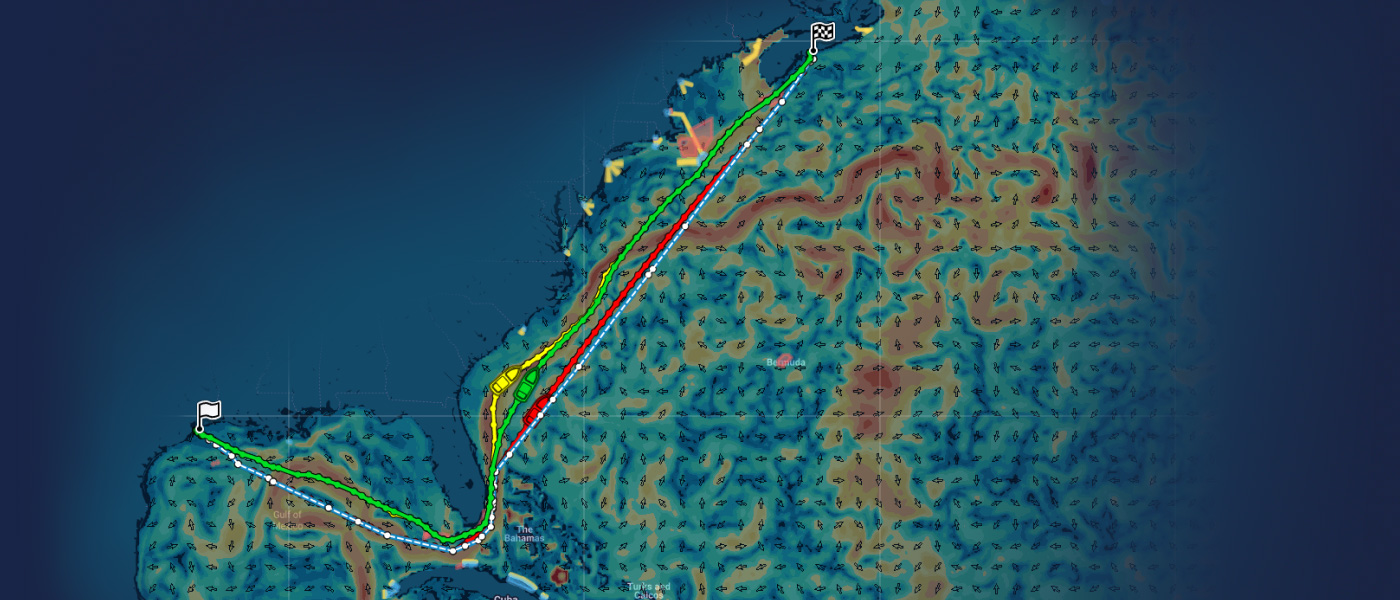
T-VOS - is the first AI-based multi-objective voyage optimisation software for the shipping industry, capable of simultaneously optimising for time, fuels, TCE and emissions.
Combining Theyr’s high fidelity metocean data with a decade of academic research and development from the AI team at the University of Southampton and the Alan Turing Institute.
Contact us at [email protected] to request your demo today.
Benchmarking against existing optimisation solutions on the market demonstrates significant improvements of at least:
in fuel and corresponding emissions' savings
in transit time savings
improvement on TCE
Benefits of multi-objective approach
1. Allows higher flexibility to clients as the best route is selected from a range of visualised routes.
2. Puts different emphasis on fuel consumption and voyage time as outputs.
3. Leads to a higher quality of solutions in comparison to single-objective or weights-based optimisation
4. Avoids premature convergence on sub-optimal results and potential bias towards certain objectives
Easy integration and scalability
Scalable design and RESTful API allow seamless third-party integration with B2B maritime digital suite providers.

Want to learn more? Request your demo today
Contact us at [email protected], t-vos demo request.
Sorry, something went wrong on our side.
Please try to submit your request again a bit later or send us an email to [email protected].
Thank you for your inquiry.
- The Platform
- Knowledge Hub
- Book a Demo
Optimising speed and routes for both profit and planet
Voyage Optimisation
ZeroNorth’s advanced algorithms generate data-driven recommendations to highlight the optimal route based on your goals for voyage, vessel, bunker and emissions optimisation.

The challenge
The shipping industry needs to urgently reduce emissions while also driving growth and profitability. The need is to build a sustainable maritime company at a time of volatility and during the critical green transition. It is important to be able to sail optimally between point A and point B while still achieving commercial and environmental goals.

What we offer
Voyage Optimisation converts data into tangible actions to reduce CO2 emissions and maximise profit. By connecting multiple data points within a single platform, ZeroNorth’s advanced algorithms generate data-driven recommendations to highlight the optimal route based on customers' specific goals for voyage, vessel, bunker and emissions optimisation.
ZeroNorth’s platform provides advanced route planning with an unmatched capability to enable operators to manage commercial voyages without sacrificing safety, profit or sustainability.
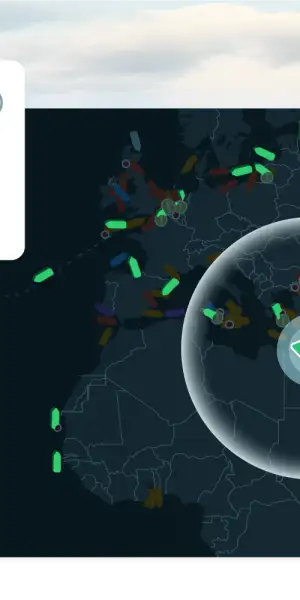
Key Features
Fleet Dashboard
Customers have a full view of all vessels in their current locations, as well as a linked dashboard with information such as: destination, optimisation status and alerts. Operators and managers have a detailed overview of their entire fleet, giving them full transparency and actionable insights.
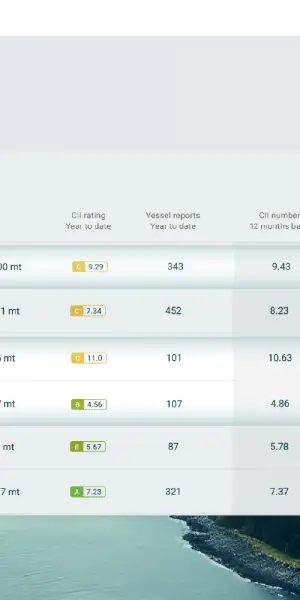
Integrated real-time weather route optimisation
As weather is dynamic, ZeroNorth’s voyage optimisation with integrated weather routing offers data in real time with an updated forecast every six hours and uses notifications to alert an operator if a route’s optimal speed and route needs to be adjusted. This powerful functionality makes it possible to compare weather, sustainability and dollar impacts.

Compare Multiple Routes
Operators can compare multiple routes giving them transparency on weather, USD upside, speed and CO2 emissions. This feature suggests routes based on millions of data points to enable decision making for profit and planet.

Customisable Vessel Safety Parameters & Validation
Operators can establish safety constraints each vessel or fleet must respect to avoid High Risk Areas, such as known war zones, piracy zones and keeping a certain distance from shore. Controlling these parameters enables safety, trust and continuous optimisation towards commercial and environmental goals


Sophisticated Fuel Models
ZeroNorth's fuel model predicts the total consumption of a vessel sailing at sea. The advanced model combines naval architecture principles, machine learning and historical data to provide accurate predictions informing data-driven decisions for owners and operators in the ZeroNorth platform.

Add On Services
- Owners & Operators
- Commercial Operators
Key Features:
- Live plan available in browser
- Information on route with updated weather information
- Offline mode makes it possible to see the plan even when there is temporary outages in connectivity on board
- Weather updated with every new forecast
- ECDIS compatible route files can be downloaded directly from the interface
ZeroNorth Onboard
- Access for Masters to optimise their voyages
- Full autonomy for Masters with no need for ashore support
- Comprehensive real-time weather route optimisation
- Ability to compare multiple route suggestions
- Utilise sophisticated fuel models
- Requires access to the internet
Key benefits
- Improve business and see the potential benefit for a whole fleet utilising the ZeroNorth platform.
- Be change makers and unlock the power of a partner who understands the challenges driving industry transformation.
- Cutting edge technology and data driven actions to optimise operations and increase value across the supply chain.
- Achieve results with quick ROI and visible USD and CO2 impact.

Talk to our experts
For product demos, conducting trials, or pricing information, please contact:

Mike Konstantinidis
Managing Director
Email: [email protected] Mobile: +306979792761 or +4531645785

Senior Account Manager
Email: [email protected] Mobile: +65 8286 5288

Nikolaj Levy
Senior Account Executive
Email: [email protected] Mobile: +45 31422429

Paul Van Vessem
Email: [email protected] Mobile: +65 9123 5981

James Moses
Sales Director for UK & America
Email: [email protected] Mobile: +447467540715
For Owners and Operators
For Commercial Operators
For the Bunker Market
Profitable voyages, sustainable horizons
Experience first-hand how ZeroNorth's advanced technology can revolutionise your maritime operations. Dive deep into data-driven insights and optimise voyages to unify sustainability and profitability.

Easiest, most effective voyage optimisation and planning
Voyage optimisation – the smoothest way to your optimal voyage plan
The Voyage Optimiser tool uses weather data, safety parameters and your commercial efficiency considerations to plan the most optimised voyage and route for your vessel. This web-based tool is easy to use, and it will take the guesswork out of route planning. Adopt the Voyage Optimiser tool and you will have the ideal position to make informed decisions on the upcoming voyage. It uses advanced algorithms to optimise the vessel’s route and fuel consumption. It will also monitor the progress of the voyage against the plan.
Voyage Optimiser delivers seven valuable benefits
Saves time. Voyage planning is faster because the optimised routes and speed profiles are based on real-time weather data and safety parameters.
Reduces effort. It is easier and more convenient for you plan voyages thanks to the FOS software. Voyage suggestions and calculations are effortlessly generated based on the data within the system.
Saves money. The tool helps your vessel perform optimally. Its fuel efficiency is optimal, which saves fuel and reduces your operational costs. Fuel savings bring emissions savings, which lowers your EU ETS costs.
Reduces risk and reduces anxiety. Your voyage plan is based on real-time data, which eliminates guesswork and reduces the risk of human error. The tool also monitors the ship’s progress against the plan while it is sailing.
Connects. The tool connects between the vessel and onshore management, and collaboration is easier and more efficient. Both sides stay on track about the plan and possible course corrections.
Grows your expertise. The Post-Voyage Insights in the tool will give you valuable benchmarking and analyses. You will learn from each voyage.
Regulatory compliance. The tool helps ensure that the vessel stays compliant with Carbon Intensity Indicator (CII) ratings.
Save the details – download this handy one-page fact sheet and you can get back to it at your convenience.
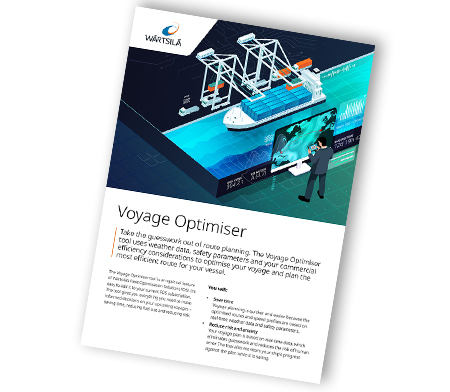
Voyage Optimiser – key features
Weather routing. The Voyage Optimiser tool will plan the optimal route while considering no-go areas and ECAs, ECO speed, fixed speed instructions, or the need to optimise for JIT.
Integration. The Voyage Optimiser tool can be integrated with your existing systems and platforms. Its seamless integration capabilities make it easy to bring into use.
Accurate data. Because the tool uses reliable, real-time weather information and safety parameters, it can make an accurate and optimised voyage plan.
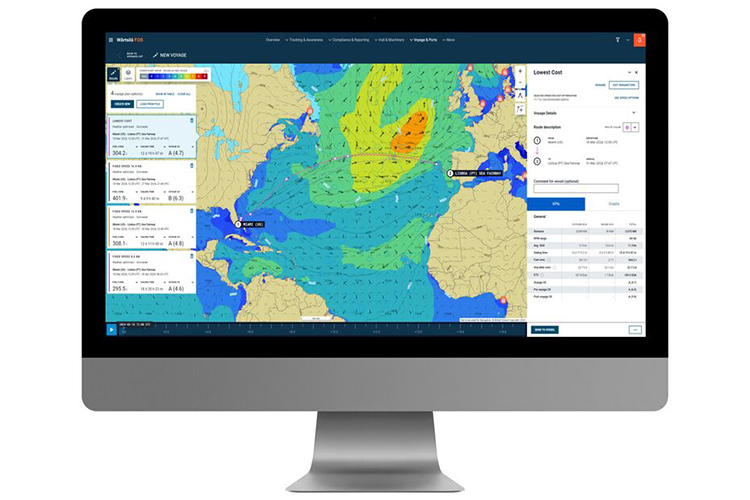
Easy to use. Because the Voyage Optimiser tool is intuitive and easy to use, the user can concentrate on the more important task – navigating the vessel.
Compatible. The tool is compatible with a wide range of vessels and it adapts to a variety of shipping operations. That is why most vessels and fleets will find it optimally suited to their purposes.
Cyber secure. The tool meets data privacy and protection requirements. It has robust security measures built in to ensure that your data stays confidential and in your control.
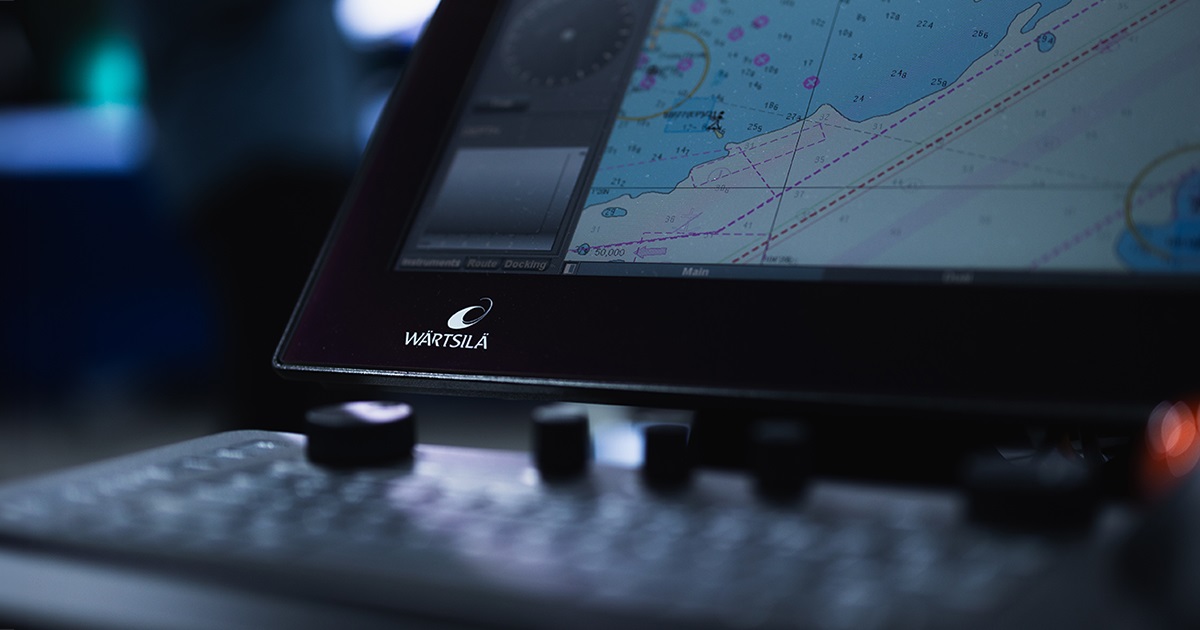
Discover how optimising your voyages can help you tackle your key challenges and cut costs.
How to get started with the Voyage Optimiser tool
The Voyage Optimiser tool is an optional feature of our Fleet Optimisation Solution (FOS) .
It is easy to add it to your current FOS subscription. Please contact us to schedule a personalised demonstration to learn how this tool could transform your business.
If you are not a FOS user yet, your easiest step is to let us know that you are interested.
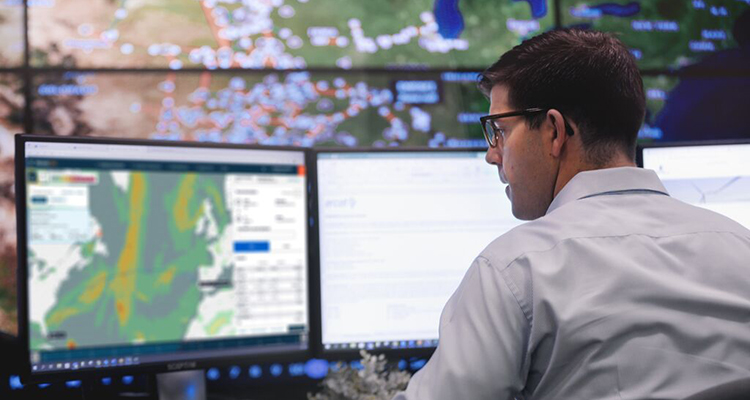
When you want to unleash the potential of FOS and Voyage Optimiser for cost savings and operational efficiency, take this easy step and let us know you are interested.
- Privacy notice
- Cookie notice
- Terms of Use
The Crucial Role of Voyage Planning and Route Optimisation in Maritime Operations
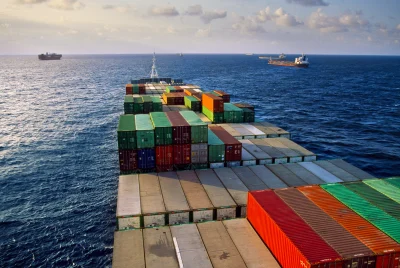
- Redefining success at sea
In the vast expanse of the world's oceans, where unpredictable weather, safety concerns and environmental regulations converge, the maritime industry faces a myriad of challenges. In this dynamic seascape, voyage planning and route optimisation emerge as critical factors that can redefine success for ship owners, managers, charterers and operators alike.
- Fuel efficiency and cost savings
Embarking on a journey towards economic viability and competitiveness, maritime stakeholders increasingly turn to advanced weather routing systems and speed profile optimisation. By collaboratively leveraging real-time data, ship managers and charterers can plan routes that not only sidestep adverse conditions but also optimise vessel speed for enhanced fuel efficiency.
Ship managers and charterers seek routes strategically planned to take advantage of favorable weather conditions, capitalising on prevailing currents, like the Gulf Stream or Kuroshio Current, for instance, which can significantly boost speed and fuel efficiency. Additionally, vessels can avoid areas prone to adverse weather conditions, such as heavy storms, hurricanes or turbulent seas, prioritising the safety of the vessel, crew and cargo. Through the dynamic use of real-time data, these stakeholders can continually assess evolving factors, making informed decisions, adjusting routes and optimising vessel speed to harness the most advantageous conditions along the way.
The result? Significant reductions in fuel consumption and operating costs, benefitting all parties and ensuring a smoother sail in turbulent economic waters.
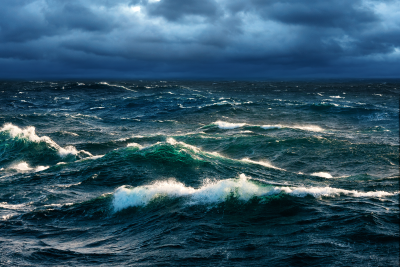
- Better operational planning
In an era marked by heightened environmental consciousness, voyage optimisation is a crucial ally for maritime stakeholders. Together, leading ship owners, operators, managers and charterers actively strive to minimise their carbon footprint and adhere to stringent environmental regulations by meticulously fine-tuning routes and vessel speeds. This strategy aligns their operations with the growing expectation of responsible business practices, fostering a shared commitment to ecological responsibility within the industry.
Voyage optimisation not only helps reduce emissions, it also plays a crucial role in meticulous operational planning, providing bridge leaders and crews with the tools and high-level visibility needed to empower compliant operations along routes, so that crews are prepared to comply with regulations within environmentally protected zones. These areas are often closer to land, where certain discharges may be prohibited, or speeds are restricted. This detailed planning significantly diminishes the risk of unintentional infractions that could harm the environment and tarnish the company's reputation.
- Improved schedule adherence and reliability
For ship managers, operators, and charterers, the promise of improved schedule adherence is a game-changer. Voyage optimisation, driven by historical data and predictive analytics, empowers stakeholders to navigate the seas with unprecedented precision. By avoiding delays caused by adverse weather or suboptimal routes, reliability becomes a hallmark of their services, translating into enhanced customer satisfaction, trust and the potential for attracting new business opportunities.
- Optimised fleet performance and resource utilisation
In the pursuit of operational efficiency, operators and ship managers rely on voyage optimisation tools for a comprehensive view of fleet operations. This isn't just about making informed decisions on maintenance schedules, route planning and fuel consumption; it's a practical shift toward optimising overall performance. This shift has a ripple effect, with vessels being maximally utilised, minimising idle time, and ultimately leading to efficiency gains that positively impact economic outcomes across the industry.
As the maritime industry charts a course into the future, the significance of voyage planning and route optimisation cannot be overstated. From fuel efficiency and environmental sustainability to improved safety and operational performance, the benefits are far-reaching. As stakeholders embrace these technological advancements, they not only navigate the challenges of today but also set sail towards a more prosperous and sustainable future on the high seas.
Navigation from LR OneOcean consolidates voyage planning activity — including optimisation by time, cost and fuel — into one streamlined workflow, allowing team members aboard and onshore to compare routes and evaluate all relevant voyage planning criteria on one interface. This high-level view, with zoom-in access to granular navigational data, enables the best possible decision-making to remain competitive and forward-thinking in a rapidly-shifting industry.
Sign up for our newsletter for latest news, insights and innovations

StormGeo launches voyage optimisation application package

- Story By: Rob O'Dwyer
- October 6, 2020
- Software, AI and Big Data
StormGeo has launched a new package of voyage management and optimisation software services under the name s-Suite, available as a combined system or as individual modules.
The new offering includes three modules, s-Planner, s-Insight and s-Routing, which include tools for voyage planning, onboard route optimisation, route advisory services and fleet performance management.
The aim of the overall system is to provide a single optimised workflow where ship and shore have a common operational platform to support cooperative decision making based on real-time data sharing.
“s-Suite’s complete solution gives our clients the advantage of improved efficiency and collaboration by connecting ship and shore, ensuring faster decisions so vessels save time and fuel while maximising the vessel’s performance,” said Kim Sørensen, StormGeo Chief Operating Officer for Shipping.
“This solution is for shipping companies of all sizes, enabling them to reduce fuel costs and emissions with simple, easy to use tools that can be installed overnight. The s-Suite is supported by maritime experts in our Fleet Performance Centers, so clients can benefit from real-time advice, data accuracy and in-depth analysis, ensuring optimal vessel performance.”
s-Planner integrates voyage planning, route optimisation, as well as charts and publications management, with information shared in shore-based modules. s-Insight offers fleet performance management, covering commercial, technical, and environmental performance, with data collected by the system supplemented by human support from StormGeo’s Fleet Performance Centers to provide fuel-saving recommendations and assistance.
s-Routing also combines human support and data analytics to advise on the optimal route for vessel voyages.
Share this story
About the author.

Rob O'Dwyer
Rob is Chief Network Officer and one of the founders of Smart Maritime Network. He also serves as Chairman of the Smart Maritime Council. Rob has worked in the maritime technology sector since 2005, managing editorial for a range of leading publications in the transport and logistics sector. Get in touch by email by clicking here , or on LinkedIn by clicking here .
Further Reading

BIMCO calls for IMO to create industry digitalisation strategy

Shell to implement trim and draft optimisation system on LNG carriers

MMT adds trim optimisation to fuel system

News Archive
Smn newsletter.
Country Afghanistan Aland Islands Albania Algeria American Samoa Andorra Angola Anguilla Antarctica Antigua and Barbuda Argentina Armenia Aruba Australia Austria Azerbaijan Bahamas Bahrain Bangladesh Barbados Belarus Belgium Belize Benin Bermuda Bhutan Bolivia Bonaire, Saint Eustatius and Saba Bosnia and Herzegovina Botswana Bouvet Island Brazil British Indian Ocean Territory British Virgin Islands Brunei Bulgaria Burkina Faso Burundi Cambodia Cameroon Canada Cape Verde Cayman Islands Central African Republic Chad Chile China Christmas Island Cocos Islands Colombia Comoros Cook Islands Costa Rica Croatia Cuba Curacao Cyprus Czech Republic Democratic Republic of the Congo Denmark Djibouti Dominica Dominican Republic East Timor Ecuador Egypt El Salvador Equatorial Guinea Eritrea Estonia Ethiopia Falkland Islands Faroe Islands Fiji Finland France French Guiana French Polynesia French Southern Territories Gabon Gambia Georgia Germany Ghana Gibraltar Greece Greenland Grenada Guadeloupe Guam Guatemala Guernsey Guinea Guinea-Bissau Guyana Haiti Heard Island and McDonald Islands Honduras Hong Kong Hungary Iceland India Indonesia Iran Iraq Ireland Isle of Man Israel Italy Ivory Coast Jamaica Japan Jersey Jordan Kazakhstan Kenya Kiribati Kosovo Kuwait Kyrgyzstan Laos Latvia Lebanon Lesotho Liberia Libya Liechtenstein Lithuania Luxembourg Macao Macedonia Madagascar Malawi Malaysia Maldives Mali Malta Marshall Islands Martinique Mauritania Mauritius Mayotte Mexico Micronesia Moldova Monaco Mongolia Montenegro Montserrat Morocco Mozambique Myanmar Namibia Nauru Nepal Netherlands New Caledonia New Zealand Nicaragua Niger Nigeria Niue Norfolk Island North Korea Northern Mariana Islands Norway Oman Pakistan Palau Palestinian Territory Panama Papua New Guinea Paraguay Peru Philippines Pitcairn Poland Portugal Puerto Rico Qatar Republic of the Congo Reunion Romania Russia Rwanda Saint Barthelemy Saint Helena Saint Kitts and Nevis Saint Lucia Saint Martin Saint Pierre and Miquelon Saint Vincent and the Grenadines Samoa San Marino Sao Tome and Principe Saudi Arabia Senegal Serbia Seychelles Sierra Leone Singapore Sint Maarten Slovakia Slovenia Solomon Islands Somalia South Africa South Georgia and the South Sandwich Islands South Korea South Sudan Spain Sri Lanka Sudan Suriname Svalbard and Jan Mayen Swaziland Sweden Switzerland Syria Taiwan Tajikistan Tanzania Thailand Togo Tokelau Tonga Trinidad and Tobago Tunisia Turkey Turkmenistan Turks and Caicos Islands Tuvalu U.S. Virgin Islands Uganda Ukraine United Arab Emirates United Kingdom United States United States Minor Outlying Islands Uruguay Uzbekistan Vanuatu Vatican Venezuela Vietnam Wallis and Futuna Western Sahara Yemen Zambia Zimbabwe


- Green Glossary
- Technical Information
- Emission Reduction
- Performance Simulator
- Bulk carriers
- Gas Carriers
- Passenger Ships
- Brand Films
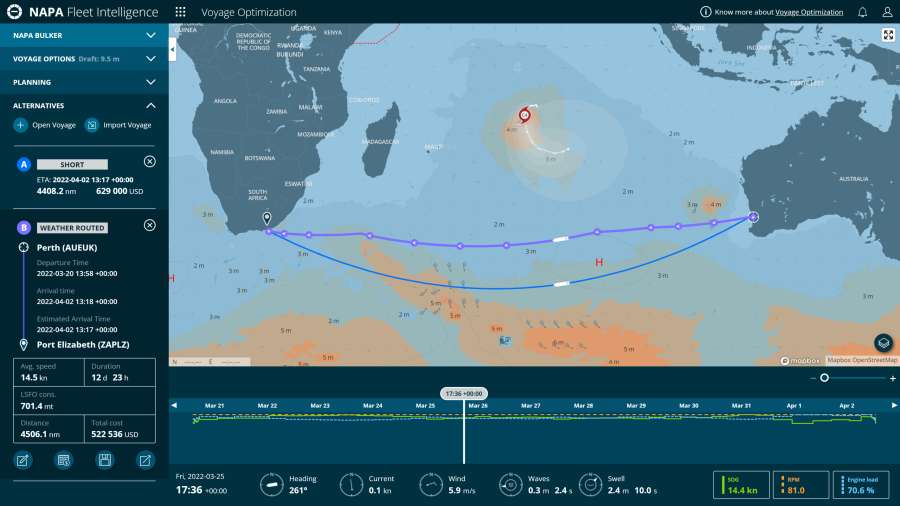
Norsepower and NAPA join forces to maximise wind propulsion benefits using voyage optimisation
- April 4, 2022
A new agreement between clean tech and maritime software leaders will use voyage optimisation tools to help wind-assisted vessels in their voyage planning to boost fuel savings and emissions reductions.
Norsepower Oy Ltd has signed a formal agreement with NAPA, the global maritime software, services and data analysis expert, to offer weather routing software in combination with its Rotor Sails solution.
Under the agreement, NAPA Voyage Optimization software will be included as an option in all future sales of Norsepower’s Rotor Sails solution. The combined offer, which applies to retrofits as well as newbuilds, will enable shipowners to maximise both fuel savings and emissions reductions. The combination of voyage optimisation and wind propulsion provides significant potential for increased performance compared to either of the two technologies alone. The software determines the best possible voyage plan for the vessel to maximise the energy savings, taking into account weather conditions throughout the voyage as well as each ship’s design profile and operational requirements.
The Norsepower Rotor Sail Solution is a modernised version of the Flettner rotor, a spinning cylinder that uses the Magnus effect to harness wind power and generate thrust – reducing fuel consumption and emissions by an average of between 10-25%. The solution has so far been installed on six different vessels, with further orders confirmed with CLdN, the logistics specialist for road, sea and rail.
NAPA Voyage Optimization solution enables captains and ship managers to choose the routes that will minimise their fuel consumption and emissions, depending on the weather conditions. Importantly, the suggested routes are tailored to the designs and characteristics of each ship, using vessel-specific digital models to assess and predict performance under different conditions. This will ensure Norsepower’s Rotor Sails system is specifically considered in the ship performance models to deliver optimal routing.
Tuomas Riski, CEO of Norsepower, commented on the partnership: “Our Rotor Sails already offer fuel and associated emissions savings of up to 25%. However, savings can be significantly enhanced when used alongside weather routing software. Given the magnitude of the energy transition challenge, combining commercially-proven solutions enables shipowners to take the next step to not only meeting regulatory targets, but exceeding them. Vessels using the solutions available today will be able to decarbonise faster. It will also help shipowners achieve greater climate alignment compliance scores, including the IMO’s Carbon Intensity Indicator (CII) as well as supporting the ship finance portfolios that are influenced by the requirements of directives such as the Poseidon Principles and Sea Cargo charter clauses. We are proud to partner with NAPA to enhance our offer to our clients with this turnkey solution that will help them achieve optimal results from our well-established Rotor Sails.”
Pekka Pakkanen, Executive Vice President at NAPA Shipping Solutions, added: “Advanced weather routing is essential for all ships, but it is particularly important for wind assisted vessels. Now that wind propulsion solutions are becoming a reality for a growing number of ocean-going vessels, we are taking this to the next level with voyage optimisation software which can fully model various clean tech solutions in all weather conditions, taking into account design data for each individual vessel. This is made possible by our decades of expertise in naval architecture and vessel performance monitoring. We are delighted to collaborate with Norsepower to help more companies around the globe achieve their sustainability ambitions with this powerful combination of technologies
To find out the potential for a ship’s fuel savings and emission reduction using Rotor Sails, click here .
Switch language:

Will wind-assisted propulsion blow the maritime industry away?
A partnership between NAPA and C-Job Naval Architects is studying the applications of wind-assisted propulsion using voyage optimisation software, hoping to ultimately drive the industry away from polluting fuels and help it prepare for the IMO’s ever-stricter requirements.
- Share on Linkedin
- Share on Facebook
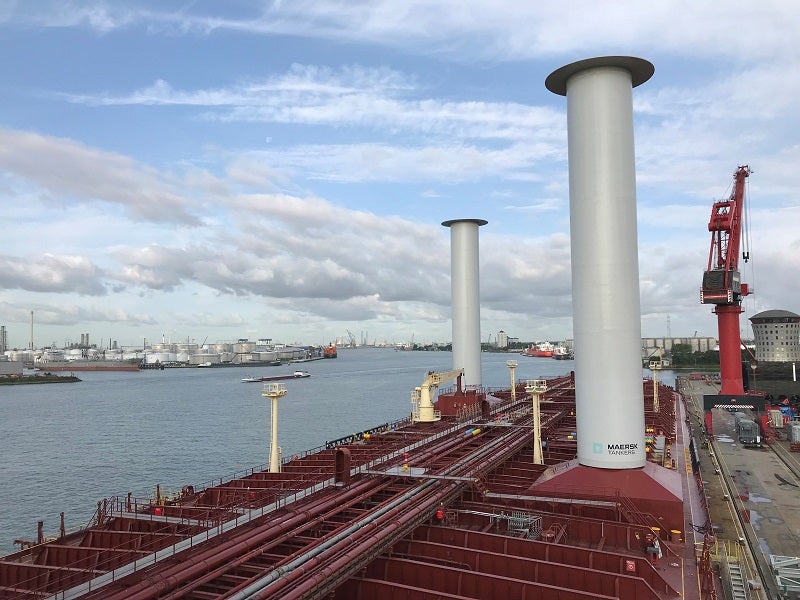
Call it a sign of the industry’s nostalgic attachment to its origins, or more simply the answer that’s been under everybody’s nose for far too long, but it seems like the age of wind-powered ships is back for good, and it might well be a key element in the fight against climate change.
The only propulsion method for ships between the 19 th and early 20 th century, wind propulsion relies on sails or similar wind-powered devices like rotor sails, with its current, modernised version reportedly leading to substantial fuel and costs savings.
Go deeper with GlobalData

Environment Sustainability in Aerospace, Defence & Security: Wind T...
Environment sustainability in aerospace, defence & security: contra..., data insights.
The gold standard of business intelligence.
Find out more
Related Company Profiles
Imo holding gmbh, c-job naval architects, maersk tankers as.
That is according to recent research by maritime software, services and data analysis provider Naval Architectural Package (NAPA) and C-Job Naval Architects, whose joint work has been focusing on optimising prevailing wind patterns and encouraging the industry to get on-board with wind-assisted propulsion.
Over the past few years, this technology has also been tested by the likes of Viking Line, Bore, and Maersk Tankers. In particular, promising results recently came from Maersk, who, in autumn 2019, revealed having achieved an 8.2% reduction in fuel consumption in its 12-month trial of rotor sails aboard Maersk Pelican.
Recent findings from NAPA and C-Job’s studies have also confirmed the potential of rotor sails, which can help save up to 20% of fuel on deep sea routes. Their research is being conducted with the support of NAPA’s weather routing software, Voyage Optimisation, which “combines historical weather data and current weather predictions with a vessel-specific ship performance model”.
As more troubled waters await the industry in the years to come, the two companies share their insights on wind-assisted propulsion and its environmental benefits.
How well do you really know your competitors?
Access the most comprehensive Company Profiles on the market, powered by GlobalData. Save hours of research. Gain competitive edge.

Your download email will arrive shortly
Not ready to buy yet? Download a free sample
We are confident about the unique quality of our Company Profiles. However, we want you to make the most beneficial decision for your business, so we offer a free sample that you can download by submitting the below form
A look at the technology
As Claus Stigler, senior software developer at NAPA Shipping Solutions explains, the starting point is the company’s own Voyage Optimisation software, which uses artificial intelligence to calculate a preferable voyage route for a particular vessel and the fuel savings it would bring. “The tool is based on a number of very explicit inputs,” he says, “like a voyage departing, for example, from Rotterdam to Houston, starting in three hours, lasting for two weeks, with a given particular ship.”
Whilst the technology can be used for different applications – and is currently being rolled out in its browser version for remote use – it is also helping optimise prevailing wind patterns for wind-assisted propulsion.
This was the driver behind NAPA’s collaboration with C-Job. Robin Berendschot, a naval architect at C-Job, explains that the software can be used to simulate the effects of wind-assisted propulsion in shipping, and therefore work out the most advantageous routes for a company.
In some cases, these will be those old trade routes that were once popular among sailors. “If you’re sailing on traditional sailing routes, using global trade winds, those routes are the most favourable to use because they have the most wind going in the right direction,” explains Berendschot. “There are predominantly strong winds in some specific directions, and those routes are theoretically the best routes for wind-assisted propulsion. But in any place on earth where there is wind, you can use wind-assistance propulsion to save fuel.”
According to Stigler, things have radically changed since sailing routes were popular: “[Back then] the paradigm was more following the rain cycles and avoid storms, but now what should be, instead, the case is having an optimal route that is both the safest and most fuel-efficient,” he says.
Finding that route requires a set of data and knowledge which go beyond the assumption that a certain current pushes in a specific direction. Instead, weather factors are now only a part of the job, as they need to be combined with engine load input, the model of the vessel and prevailing ocean currents. “That’s why in our voyage optimisation software, there is a multiple chart-based derived route network thanks to which we get frequent updates,” he concludes.
Helping the industry shift towards sustainable shipping
Reduced fuel consumption is not only positive for a company’s finances but also, as Stigler claims, a key factor towards boosting the industry’s environmental credentials.
“At the most recent conference I attended,” says Stigler, “it seemed very obvious from the companies presenting there – as well as in general – that the market has just recognised that there are massive improvements necessary for the industry in order to tackle pollution.”
Indeed, January 2020 has marked the start of the long-awaited sulphur cap rolled out by the International Maritime Organization (IMO), which represented the first of the industry’s three long-term commitments to decarbonise shipping and making it become more environmentally conscious.
Most of all, the sector is bracing itself to pursue the IMO’s future targets of achieving a 42% CO 2 reduction by 2030 and 50% greenhouse gas cut by 2050, an effort that Stigler says can only be successful if everyone works together. “The industry has recognised that partnerships are the most essential tools here, as a single company just cannot alone make the changes necessary to reach these ambitious IMO requirements.”
This, he continues, is the reason behind NAPA’s decision to switch its Voyage Optimisation technology from installer to browser, extending its use from one single ship to an entire fleet. Its also why NAPA decided to partner with C-Jobs, as well as with different traffic platforms, to carry out its analysis.
“These partnerships lead to increasing the number of potential users and the number of potential savings based on the world fleet, all in order to meet a very strict but important set of requirements.”
Sign up for our daily news round-up!
Give your business an edge with our leading industry insights.
More Relevant
Russia’s illegal invasion of Ukraine and the role of unmanned maritime vehicles
Eidesvik to convert first offshore vessel to ammonia-power with wärtsilä, maersk to explore viability of nuclear-powered container shipping, is the tide turning towards battery-powered ships, sign up to the newsletter: in brief, your corporate email address, i would also like to subscribe to:.
Ship Technology In Brief
Ship Technology Global : Ship Technology Focus (monthly)
I consent to Verdict Media Limited collecting my details provided via this form in accordance with Privacy Policy
Thank you for subscribing
View all newsletters from across the GlobalData Media network.
- Valid Voyage
- Valid Performance
- Weather Factor
- Reporting & API
- Partnerships
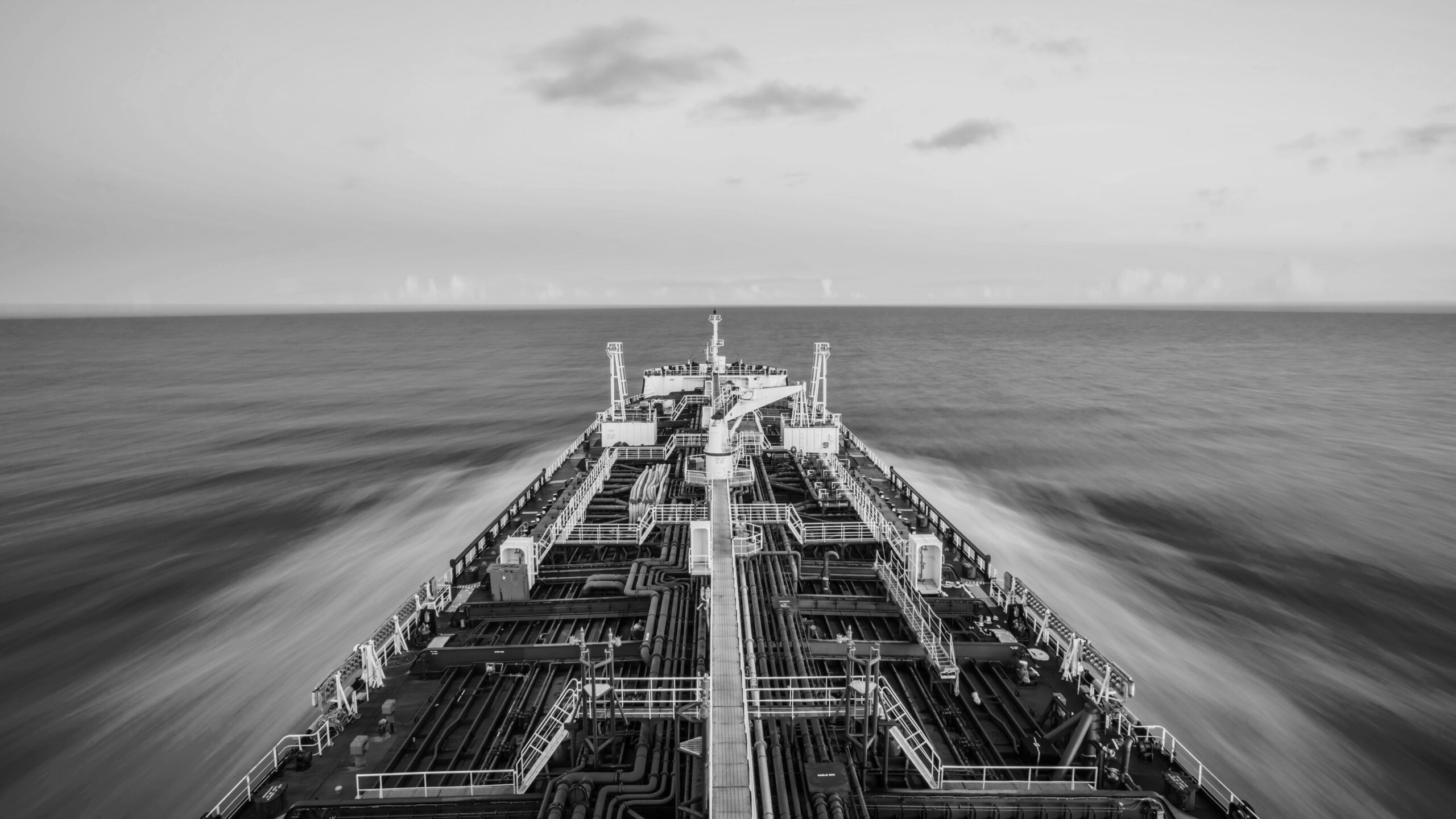
We take the guessing out of planning with Valid Voyage.
Always know the current performance of your vessel. in real-time..
With our advanced weather routing solution, you will always know your vessel’s current performance. In real-time.
Why is that important and essential for your ability to optimize? Within only 3-4 sailing days we can tell you the actual performance level of the vessel, even if it is on short-term TC in.
This gives you the information you need to make informed choices. Instruct on full speed and maintain the right to claim. Or instruct on profit speed and optimize against fuel price and the market.
We help you to find the balance between often-conflicting requirements of fuel price, market, and emissions regulations (CII among others). To find the optimal trade-off depending on your business priorities.
Accurate speed and consumption profiles for all your vessels.
Valid Voyage utilizes the same well-proven fuel models that power our Valid Performance solution. This ensures accurate speed and consumption profiles for all vessels and makes your voyage estimates more accurate than ever.
We automatically monitor each voyage against warranted speed and consumption figures. Our system allows you to continuously keep an eye on any deviation from CP during the voyage, on demand. Additionally, at the end of the voyage, we automatically send you a CP performance report – without delay or extra cost.
Valid Voyage empowers you. You can act when it suits you without waiting for a third party to react. Start a voyage without delay when chartering makes a late Friday afternoon fixture. So you can make your mark and achieve the best results on every voyage.
Voyage optimization for operators
Our combination of advanced routing algorithms, accurate weather forecasts, and validated fuel models, results in what we believe is among the most accurate voyage predictions available.
Nothing is more important than the safety of the vessel, crew, and cargo. This is considered both in the routes presented to the operator before activating the route and monitored by our team of experienced ex-sailors once the route is active.
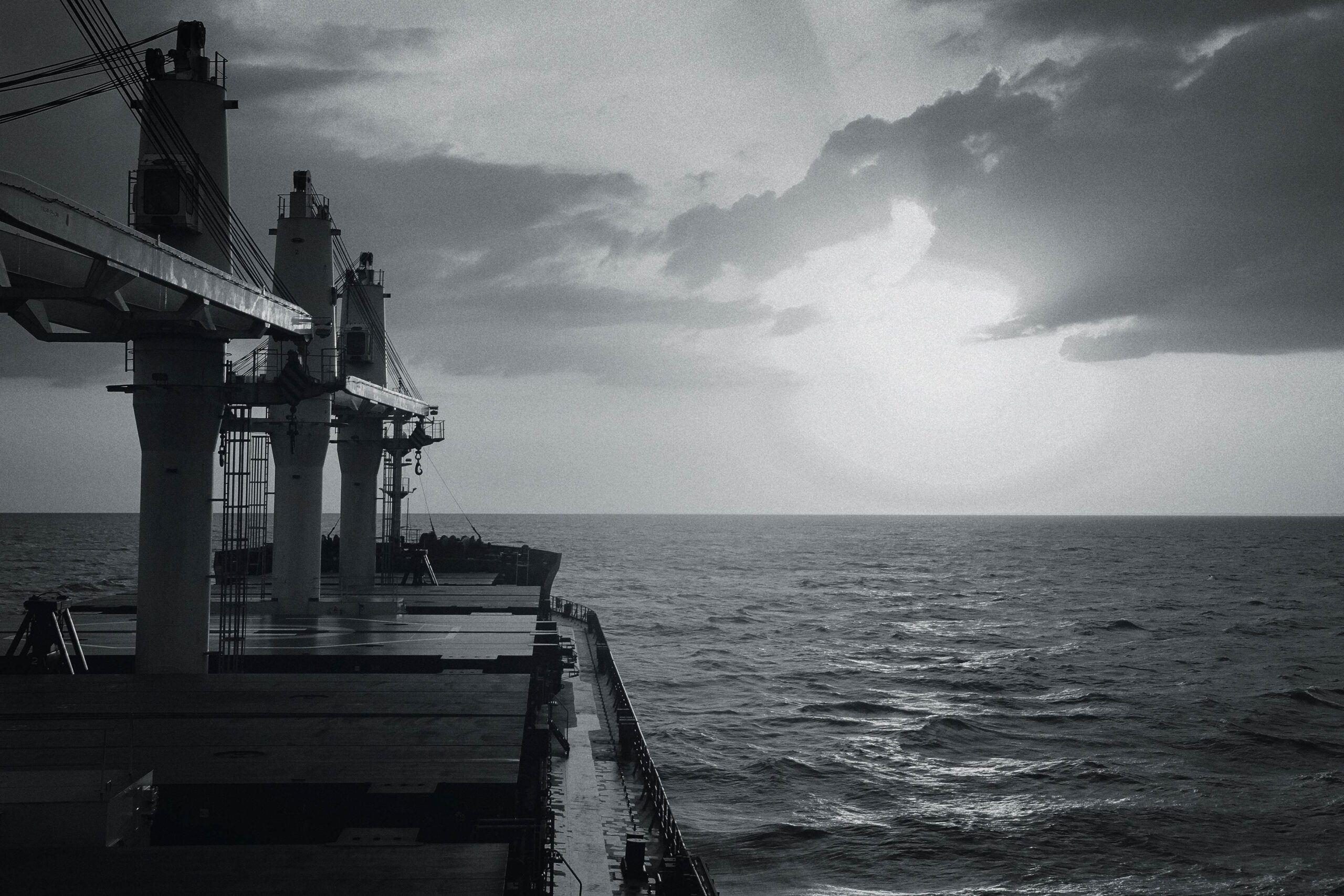
Get your predictions right - EU ETS
In Valid Voyage, you also have the possibility to calculate the impact of EU ETS on any planned voyage given a CO2 allowance cost.
Our software calculates the estimated total ETS cost and provides the operator with a full overview of the predicted result.
This adds to the already comprehensive result prediction, which includes the cost of time, cost of fuel, and CII impact of performing a certain voyage.
Why choose Valid Voyage
Cp monitoring.
All routes are automatically monitored in terms of CP compliance. Deviation figures can be monitored during the route and are available without delay as soon as the voyage is over.
We offer full claims support up until the claim goes to court.
Accurate fuel models
All vessels are assigned a valid fuel model and performance levels are monitored and adjusted continuously during the voyage.
This avoids sliding ETA’s during the voyage and gives accurate fuel and time estimates early in the voyage.
Daily re-calculations
All routes are re-calculated every 24 hours with the latest information about weather, vessel position, and vessel performance level.
Based on this information, an updated weather forecast and, if relevant, route updates, are sent to the vessel and operator daily.
Hurricane warnings
If vessels are in the vicinity of a tropical cyclone, automatic updates from the JTWC (Joint Typhoon Warning Centre) are sent to the vessel and our voyage advisors take manual control of the route until the vessel is clear.
Continuous monitoring
All active voyages are monitored by our team of experienced ex-sailors.
They remain available to assist the crew with questions about the route or weather and give qualified recommendations when needed.
Unlimited use
No limit to the number of voyages you calculate and activate in the system.
This means our voyage optimization tool can also be used for forward estimations of future voyages or what-if scenarios.
Learn more about our other solutions
Valid performance.
Valid Performance makes it effortless to identify and quantify speed loss and excess consumption. It provides you with the required tools to turn data into actionable insights.
Our Valid Data solution is vessel reporting made simple and effective. Achieve friction-free communication throughout your entire operation.
Are you prepared for CII and EU ETS reporting? We help you to navigate the regulations and reporting restrictions.

IMAGES
VIDEO
COMMENTS
Nautilus Labs offers Voyage Optimizer, a solution that combines AI-powered speed optimization, weather routing and performance routing for commercial shipping. It helps charterers create profitable, low emission routes and provides detailed voyage insights and reports.
Wallenius-Wilhelmsen uses DeepSea AI voyage routing optimisation for its cargo vessels. Vessel Voyage Optimisation for Decarbonisation ... conducted a rigorous 18-month trial of DeepSea's software to reach this deal. "This is a watershed moment for the meaningful and proven implementation of artificial intelligence (AI) in shipping," said ...
Integrated Voyage Optimization. ... In order to provide the most accurate advice, the software uses the vessel's digital twin built based on the available vessel data and parameters. It takes ...
ZeroNorth is a platform that offers data-driven solutions for the global shipping industry, such as voyage optimisation, emission analytics, bunker planning and trading, and ship management. It aims to help ship owners and operators achieve optimal performance and reduce their carbon footprint.
With Spire's Voyage Optimization solution, you can optimize your routes simultaneously for multiple objectives based on your priorities. Optimal route in terms of voyage duration, contracted cruising speed, and/or variable speed. , your vessel constraints, daily operating costs, expected fuel costs, and as many other details as you have.
NAPA Voyage Optimization - NAPA. Software and Services / Solutions for Ship Operations / NAPA Fleet Intelligence / NAPA Voyage Optimization. NAPA Voyage Optimization is an easy-to-use solution for improving operational efficiency by optimizing route and speed profiles for any sea passage. Book a demo. Key features. Related insights. How it works.
Voyage optimizations are multi-dimensional, outcome-oriented efficiency exercises. They're a sophisticated look into what could have been, what is, and what could be. And to be done well, they need to be data-driven, outcome-focused, and meaningfully tailored to each business, vessel, and leg. Simply put, they're complex, and for operators ...
Save Time, Fuel, and Emissions with Dynamic Voyage Optimization. Wayfinder delivers daily voyage guidance that accounts for changes in weather, market and vessel performance. The platform optimizes for each vessel's business, safety, and decarbonization targets, maximizing efficiency and minimizing total voyage costs. Schedule a Demo.
1. Requirements for voyage optimisation software. Voyage optimisation provides an immediate reduction in ship emissions. These systems have been recognised to cut these emissions in the region of 5-10% (Anon, 2009), helping ship operators to meet the International Maritime Organisation's (IMO) target of reducing carbon intensity 40% by 2030 and greenhouse gas emissions 50% by 2050.
Our Voyage Optimization tool is based on current and future market rates, environmental impacts, as well as machine learning-based performance models in order to output recommendations that enhance voyage outcomes. Our White Paper surfaces how voyages are currently being optimized and how shipping companies are missing key profit opportunities.
FOS is a cloud-based platform that integrates data and analytics for voyage planning, fleet performance, compliance and reporting. It helps ships and shore offices optimise routes, reduce emissions, and improve efficiency and sustainability.
The best argument for adopting a voyage optimization policy is that the decarbonization results are immediate, there is no investment needed and there are few alternatives that give such a great effect. Optimization actually starts before the vessel departs on the ballast leg of its voyage, and continues throughout the entirety of the ballast ...
T-VOS - is the first AI-based multi-objective voyage optimisation software for the shipping industry, capable of simultaneously optimising for time, fuels, TCE and emissions. Combining Theyr's high fidelity metocean data with a decade of academic research and development from the AI team at the University of Southampton and the Alan Turing Institute.
ZeroNorth offers a data-driven platform to reduce emissions and maximise profit for shipping companies. The platform provides route planning, weather routing, fuel models and other features to optimise voyages based on customers' goals.
The Voyage Optimiser tool will plan the optimal route while considering no-go areas and ECAs, ECO speed, fixed speed instructions, or the need to optimise for JIT. Integration. The Voyage Optimiser tool can be integrated with your existing systems and platforms. Its seamless integration capabilities make it easy to bring into use. Accurate data.
In the vast expanse of the world's oceans, where unpredictable weather, safety concerns, and environmental regulations converge, the maritime industry faces a myriad of challenges. In this dynamic seascape, voyage planning and route optimisation emerge as critical factors that can redefine success for ship owners, managers, charterers and operators alike.
An overview of a typical voyage optimization is shown in Fig. 1. A voyage optimization system consists mainly of the weather data model, the ship performance model, the constraints for sailing, and the voyage optimization algorithms. The input data includes weather forecast information, a ship's performance models and sailing constraints.
A voyage optimization system is used to choose the "best" sailing course/route and corresponding speeds for each individual voyage based on forecasted sea environments (Simonsen et al., 2015, Wang et al., 2019, etc.). This paper focuses on the voyage optimizations with objectives of reducing fuel consumption (air emissions).
October 6, 2020. Software, AI and Big Data. StormGeo has launched a new package of voyage management and optimisation software services under the name s-Suite, available as a combined system or as individual modules. The new offering includes three modules, s-Planner, s-Insight and s-Routing, which include tools for voyage planning, onboard ...
A new agreement between clean tech and maritime software leaders will use voyage optimisation tools to help wind-assisted vessels in their voyage planning to boost fuel savings and emissions reductions. Norsepower Oy Ltd has signed a formal agreement with NAPA, the global maritime software, services and data analysis expert, to offer weather routing software in […]
A partnership between NAPA and C-Job Naval Architects is studying the applications of wind-assisted propulsion using voyage optimisation software, hoping to ultimately drive the industry away from polluting fuels and help it prepare for the IMO's ever-stricter requirements. Maersk Tankers recently announced having achieved an 8.2% reduction ...
This means our voyage optimization tool can also be used for forward estimations of future voyages or what-if scenarios. Valid Performance makes it effortless to identify and quantify speed loss and excess consumption. It provides you with the required tools to turn data into actionable insights. Our Valid Data solution is vessel reporting made ...
The voyage optimisation course is tailored towards onshore personnel who have to support the fleet with fuel efficient actions. The course covers fuel efficient voyage planning taking into account safe operation, weather and contractual requirements. Participants are made aware of options to lower consumption and gain deeper insight into the ...